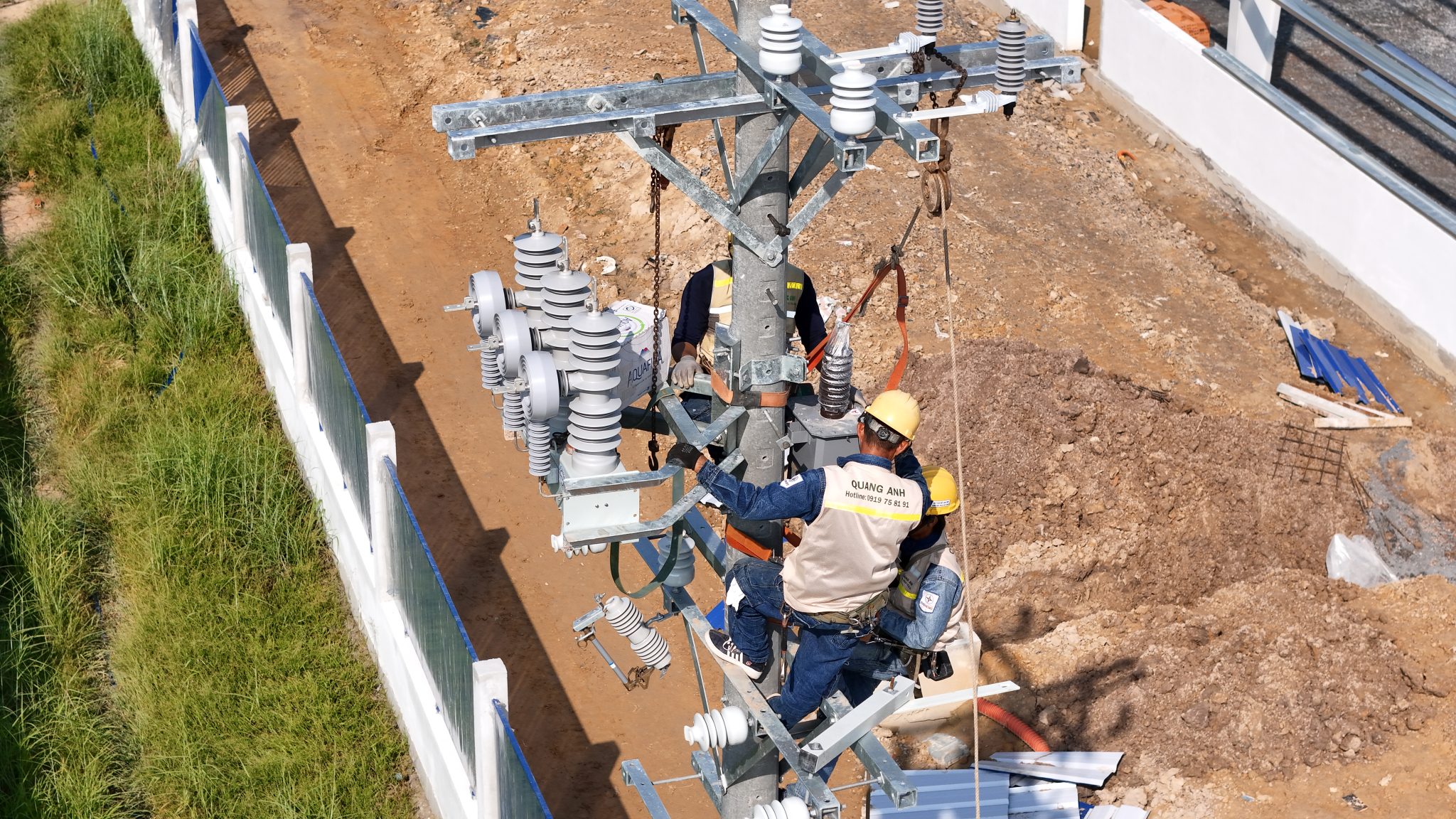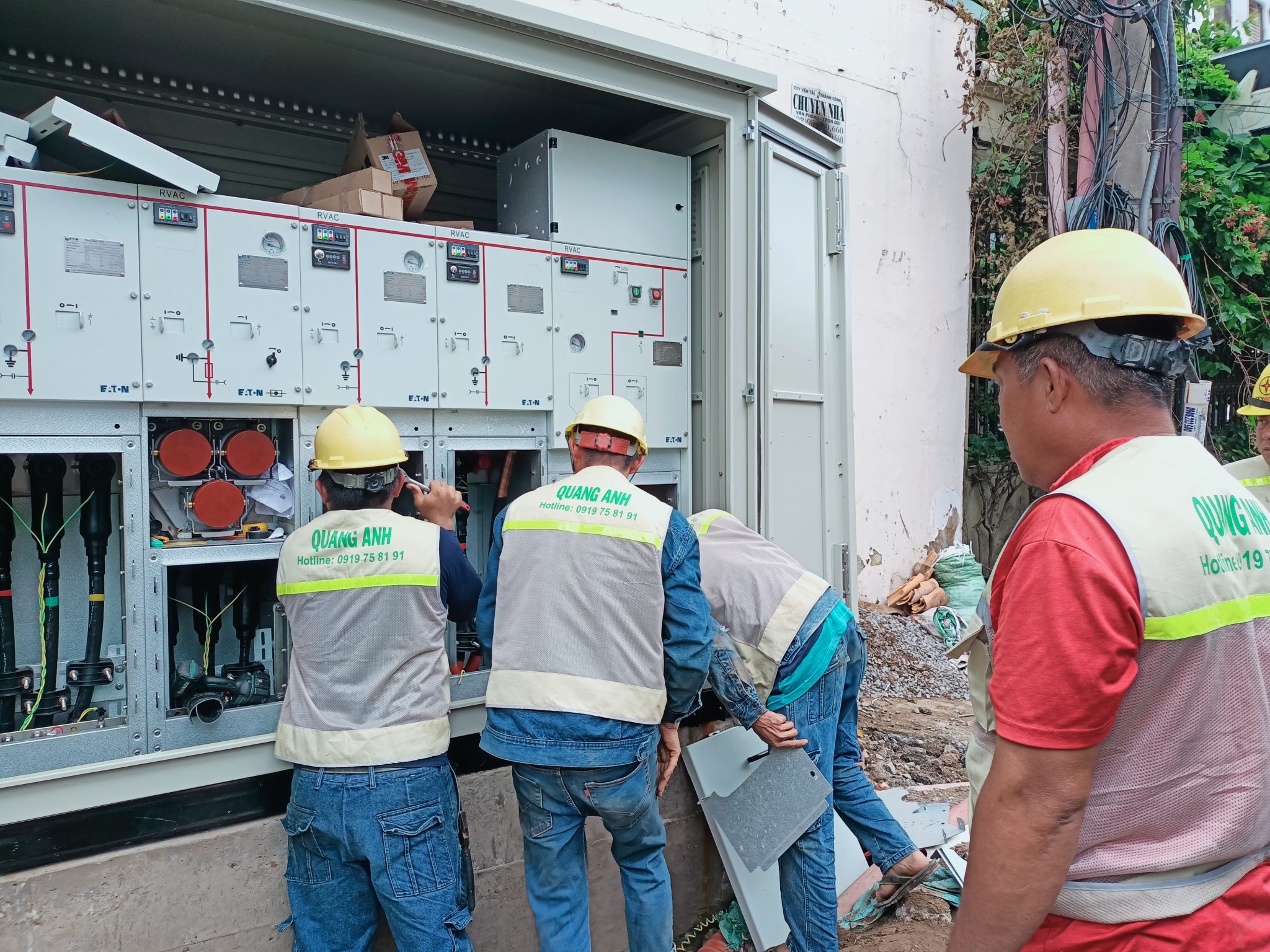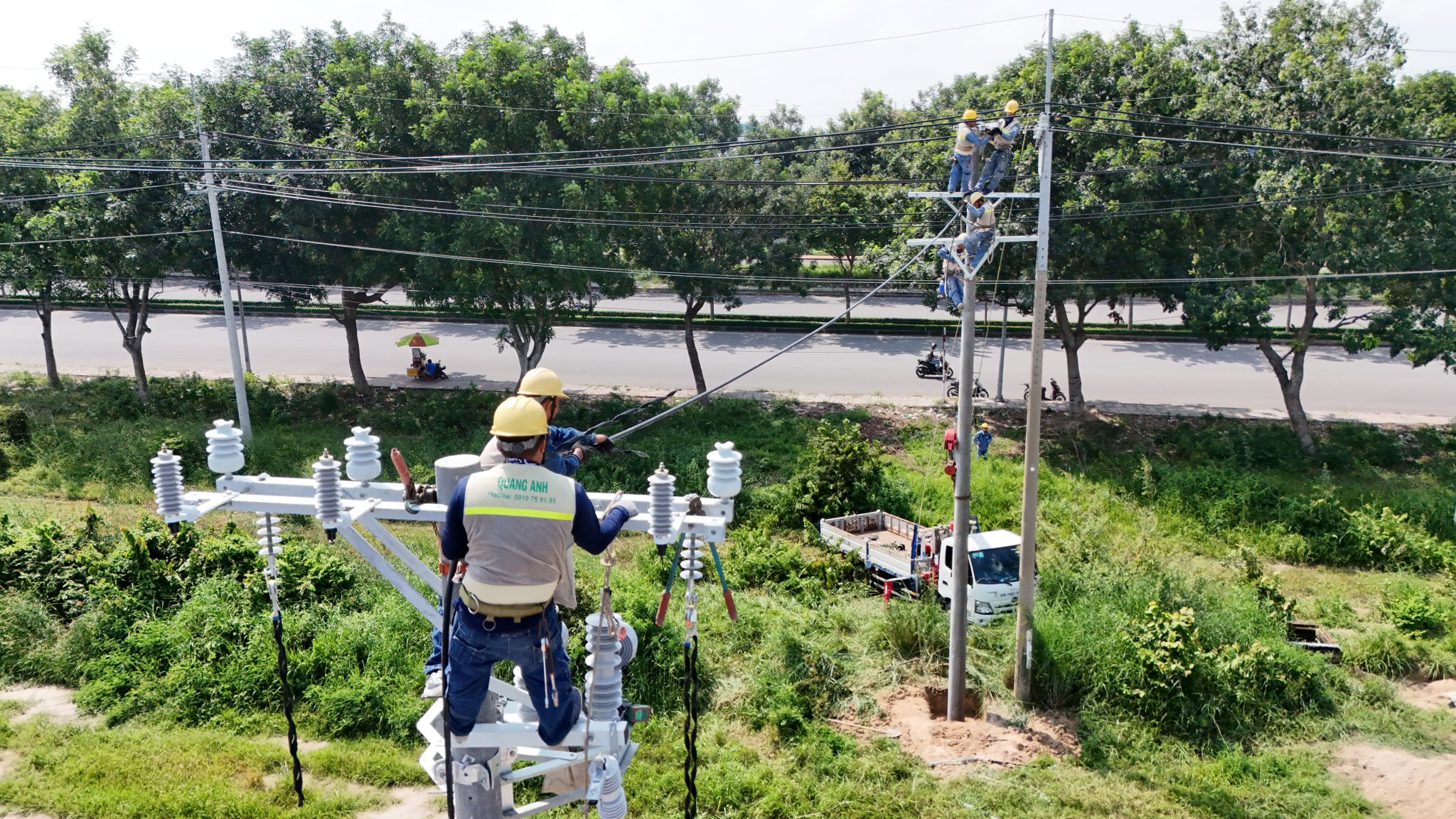Upgrading factory electrical systems is a vital process that enhances safety and efficiency in industrial operations through steps such as surveying, equipment preparation, installation, and operation.
Electrical System Upgrade Process
The upgrade process for factory electrical systems begins with assessing the current condition to identify issues such as outdated cabling or equipment. Next, a detailed renovation plan is created, outlining the project’s scope, expected costs, and timeline while ensuring compliance with safety and technical standards to effectively enhance the factory’s electrical systems.
- Reception and Current Status Survey: The process starts with receiving client requests and conducting a thorough assessment of the current electrical system, including measuring and examining each component to identify damages or faults necessitating upgrades.
- Plan Development and Renovation Solutions: After surveying the system, a comprehensive renovation plan is drafted, detailing specific components for replacement or upgrade, ensuring this is followed strictly during execution.
- Negotiation and Contract Signing: Parties negotiate contract terms, including costs and timelines, ensuring transparency before proceeding with renovations.
- Electrical System Renovation and Installation: The core phase involves dismantling old systems and installing new equipment like electrical panels and transformers, complying with design schematics and standards.
- Inspection, Testing, and Acceptance: Post-installation, systems undergo testing to confirm safety and efficiency, followed by official acceptance based on technical standards for stable operation.
- Maintenance and Support Post-Renovation: Essential services like regular maintenance ensure sustained system performance, providing ongoing technical support as required.
Critical Technical Notes for Electrical System Renovation
- Ensuring occupational safety remains a top priority throughout the renovation.
- Compliance with current electrical standards and using standard-compliant materials prevent unforeseen incidents.
- Developing adaptable contingency plans facilitates easy expansion or modification without impacting the main system.
- Providing complete documentation and diagrams to clients aids in long-term management and operation.

Electrical Installation
The process begins with middle-voltage cable installation, adhering to distance and depth regulations, followed by transformer and cable tray installation for effective cable management. The system additionally covers light electrical installations, such as lighting and other utility systems, ensuring comprehensive industrial electrical safety.
Electrical installation is pivotal in industrial construction and development, ensuring a stable and efficient power supply that enhances operational productivity. This extensive process involves key aspects like substation installations and light electrical systems such as lighting and automation devices.
Key Installation Sections
- Underground Cabling System: These cables form the backbone of the electrical system, linking substations to distribution panels, typically placed underground or in protective conduits for safety.
- Cable Trays: These facilitate routing and safeguarding electrical cables, ensuring safety, aesthetics, and easy maintenance.
- Industrial Electrical Panels: Precisely installed control centers to meet technical and aesthetic requirements.
- Substations and Grounding Systems: Ensure safe, stable power supply for large industrial areas.
- Light Electrical Systems: Include lighting, fire alarms, and other systems like surveillance cameras and automation, boosting the project’s safety and efficiency.
Installation Process Outline
- Site Survey and Consultation: Assessing needs and scope to determine optimal technical solutions.
- System Design: Engineers design detailed technical diagrams and material lists.
- Procurement and Installation: Sourcing materials and installing them according to schedule and specified procedures.
- Monitoring and Inspection: Ensure quality and safety oversight during each installation stage.
- Final Testing and Handover: Completing inspections, trial operations, and system handover to clients.
Standards and Quality Requirements
- All tasks comply strictly with international and national safety and anti-explosion standards.
- Equipment from reputable brands like ABB, Mitsubishi, and Schneider meet the highest quality requirements.
- Ensuring labor safety during construction to protect people and the environment.
Importance of Electrical Installation
Ensuring that electrical systems always operate efficiently is the primary goal of electrical installation. This not only prevents disruptions but also optimizes energy usage, reducing fire risks and safeguarding users.

Benefits and Technical Requirements in Construction Engineering
Upgrading factory electrical systems enhances safety, reduces electrical failure risks, optimizes performance, and prolongs equipment lifespan. It requires adherence to current technical standards and investing in high-quality materials to ensure long-term system efficiency. Regular maintenance is key to sustaining durability.
The construction engineering sector plays a critical role, delivering significant socio-economic benefits. The field offers extensive career opportunities, catering to the high demand for skilled engineers.
Construction projects not only improve infrastructure but also accelerate urbanization, especially in developing countries. This is critical in today’s rapid economic and urbanization trends.
An essential aspect of the industry is its creativity and challenge, encouraging innovation and problem-solving across project design, construction, and management. The sector contributes considerably to GDP and creates numerous jobs annually.
Integrating modern technology into projects is inevitable, with advancements like BIM significantly enhancing project quality. Technical requirements include solid expertise and stringent management to ensure electrical system safety, energy efficiency, and equipment longevity.
Compliance with technical standards, labor safety, and environmental protection is vital. Regular maintenance ensures stability and efficiency in construction projects.

Revamping factory electrical systems enhances industrial operation safety and efficiency. Proper system investment not only boosts functionality but also ensures a secure work environment, offering significant long-term strategic value.
Contact QuangAnhcons at +84 9 1975 8191 for expert factory electrical system renovations.
QuangAnhcons specializes in factory electrical system renovations through standard processes, ensuring safety and performance optimization for industrial projects.


Related Posts
Factory Electrical Systems: Comprehensive Design and Implementation Guide
Discover the detailed and safe process of factory electrical systems design and implementation. [...]
Oct
Blueprints Required for Factory Construction Permits
Discover the necessary blueprints in factory construction permit applications, from floor plans to electrical and [...]
Oct
What Are the Requirements for a Factory Construction Permit? A Comprehensive Guide
Explore the documentation and steps needed to secure a factory construction permit for streamlined project [...]
Oct
Factory Construction Permit Procedures in Vietnam: Essential Guidelines and Documents
Learn the procedures for securing a factory construction permit in Vietnam, focusing on document preparation [...]
Oct
Key Steps in the Factory Construction Process
Discover the essential steps and requirements for building factories. [...]
Oct
Comprehensive Electrical Substation Solutions by Quanganhcons
Discover the cutting-edge electrical substation solutions offered by Quanganhcons for industrial applications. [...]
Oct
Investment Costs for a 1MWp Solar Power System and Influencing Factors
Explore the investment costs for a 1MWp solar power system in Vietnam and the influencing [...]
Sep
QuangAnhcons: Elevating Wind Energy Solutions
Explore QuangAnhcons' leadership in wind energy and renewable solutions in Vietnam. [...]
Sep
Electrical Contractor Strategies at Becamex Industrial Park
Discover the strategic advancements and partnerships of the electrical contractor at Becamex Industrial Park. [...]
Sep
Investment Insights for 1MW Wind Energy in Vietnam: Costs and Opportunities
Discover the detailed analysis of costs and opportunities for investing in 1MW wind energy projects [...]
Sep
Advanced Electrical Installation Solutions by QuangAnhcons
Explore advanced electrical installation solutions and modern technology with QuangAnhcons. [...]
Sep
Enhancing Industrial Electrical Services with Quanganhcons
Discover Quanganhcons' expertise in industrial electrical services, offering efficient and sustainable power systems. [...]
Sep
Comprehensive MEP Solutions by QuangAnhcons: From Design to Maintenance Excellence
Discover optimal MEP solutions with QuangAnhcons, dedicated to excellence from design through maintenance. [...]
Sep
Comprehensive Electromechanical Contracting Solutions by QuangAnhcons
Explore QuangAnhcons' comprehensive services for efficient and safe energy system solutions. [...]
Sep
QuangAnhcons: Empowering Industrial Energy Solutions
Discover how QuangAnhcons delivers optimal industrial EPC solutions. [...]
Sep
Effective Industrial Construction Management and Execution
Optimize your industrial projects from design to execution with our contractor services. [...]
Sep
QuangAnhcons: Pioneers in M&E and Renewable Energy Solutions
Discover QuangAnhcons' innovative M&E services and renewable energy solutions. [...]
Sep
QuangAnhcons: Expertise and Outstanding Services in the Electrical Sector
Discover the unmatched expertise and services of QuangAnhcons, setting superior standards in the electrical contracting [...]
Sep
QuangAnhcons: Innovation and Precision in Industrial Electrical Contracting
Discover QuangAnhcons, a top contractor offering superior electro-mechanical solutions. [...]
Aug
Expert Solutions for 2x2500kVA Substation Projects with QuangAnhCons
Explore QuangAnhCons, a forefront entity in designing and constructing large industrial substations. [...]
Aug